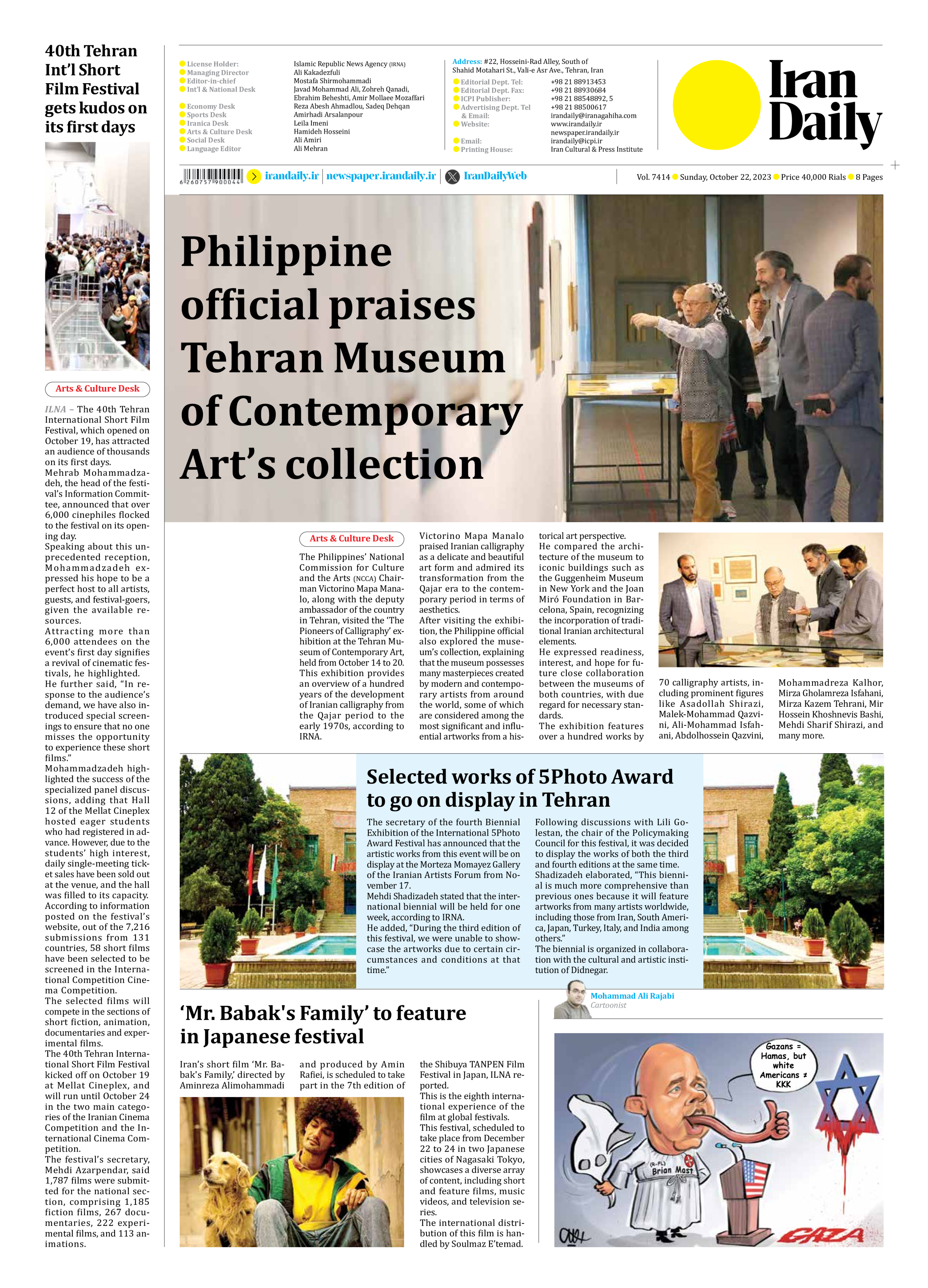
Philippine official praises Tehran Museum of Contemporary Art’s collection
The Philippines’ National Commission for Culture and the Arts (NCCA) Chairman Victorino Mapa Manalo, along with the deputy ambassador of the country in Tehran, visited the ‘The Pioneers of Calligraphy’ exhibition at the Tehran Museum of Contemporary Art, held from October 14 to 20.
This exhibition provides an overview of a hundred years of the development of Iranian calligraphy from the Qajar period to the early 1970s, according to IRNA.
Victorino Mapa Manalo praised Iranian calligraphy as a delicate and beautiful art form and admired its transformation from the Qajar era to the contemporary period in terms of aesthetics.
After visiting the exhibition, the Philippine official also explored the museum’s collection, explaining that the museum possesses many masterpieces created by modern and contemporary artists from around the world, some of which are considered among the most significant and influential artworks from a historical art perspective.
He compared the architecture of the museum to iconic buildings such as the Guggenheim Museum in New York and the Joan Miró Foundation in Barcelona, Spain, recognizing the incorporation of traditional Iranian architectural elements.
He expressed readiness, interest, and hope for future close collaboration between the museums of both countries, with due regard for necessary standards.
The exhibition features over a hundred works by 70 calligraphy artists, including prominent figures like Asadollah Shirazi, Malek-Mohammad Qazvini, Ali-Mohammad Isfahani, Abdolhossein Qazvini, Mohammadreza Kalhor, Mirza Gholamreza Isfahani, Mirza Kazem Tehrani, Mir Hossein Khoshnevis Bashi, Mehdi Sharif Shirazi, and many more.







